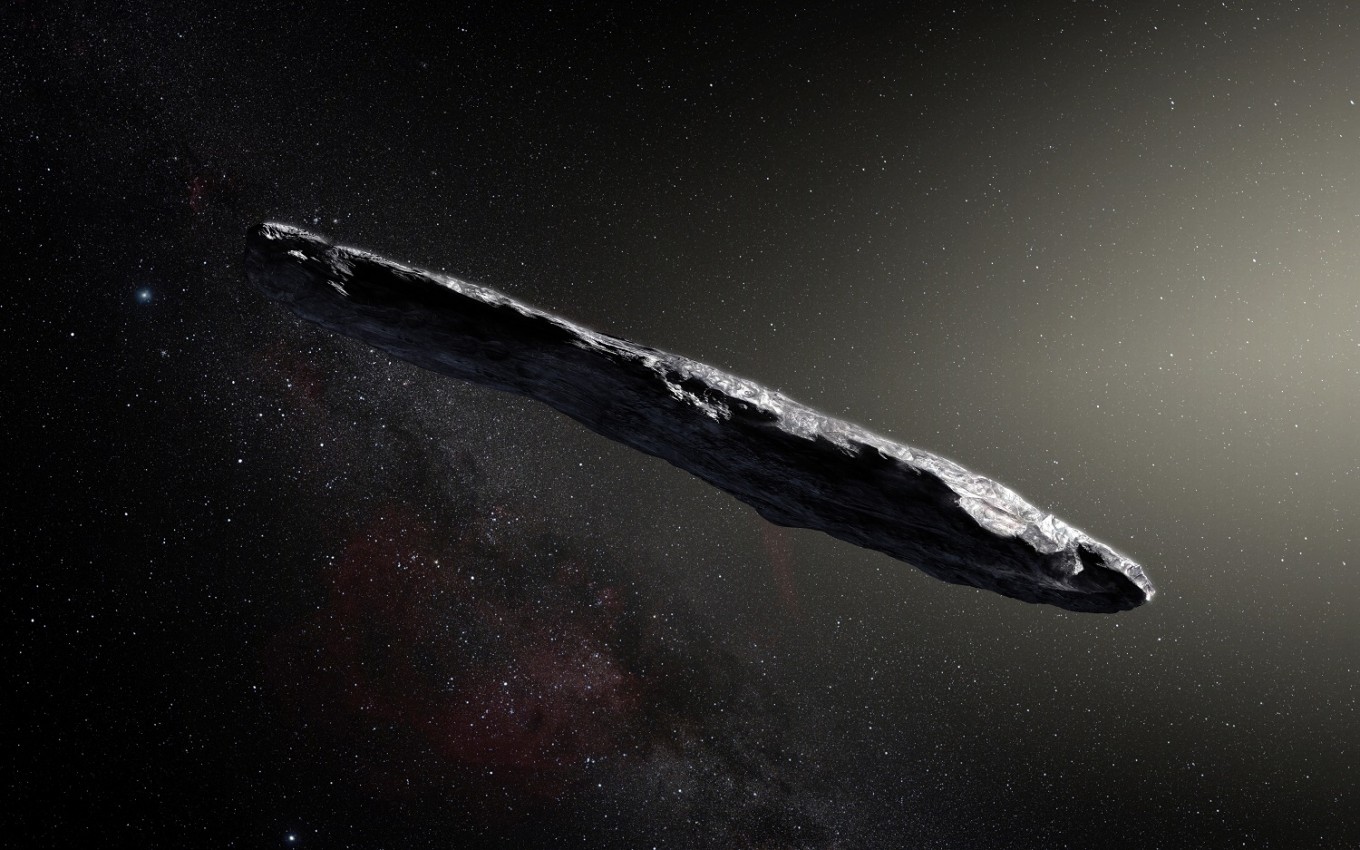Popular Reads
Top Results
Can't find what you're looking for?
View all search resultsPopular Reads
Top Results
Can't find what you're looking for?
View all search resultsVisitor from alien star system wears insulating coat: astronomers
Change text size
Gift Premium Articles
to Anyone
A
cigar-shaped rock zooming through our Solar System -- the first object from a foreign star system ever spotted in our midst -- is cloaked in a coat of organic material, astronomers said Monday.
Dubbed Oumuamua, Hawaiian for "messenger" or "scout", the object was first viewed by telescopes in October. Given its weird trajectory, surprised scientists immediately concluded it was from beyond our own planetary system.
Astronomers had long assumed that interstellar objects -- from other star systems -- would be mainly small, comet-like, ice-rich bodies.
Yet Oumuamua did not eject a comet-like "tail" of molten dust and ice when it swung by the Sun in September, implying it had no surface ice and might in fact belong to the family of asteroids -- composed mainly of metals and rock.
On Monday, scientists said Oumuamua's true nature remained a mystery, and a cometary character could not be ruled out.
Spectroscopic readings revealed it sported a half-meter (1.6-foot) coat of organic-rich material which could have protected a water-ice interior from being vaporized by the Sun.
"An internal icy composition cannot... be ruled out," a team wrote in the journal Nature Astronomy.
Oumuamua is about 400 meters (1,300 feet) long, and thin -- only about 40 meters wide, a never-before-seen shape for such a body.
Astronomers do not yet know where the alien rock came from, and estimate it may have traveled through space for billions of years before reaching our Solar System at a breakneck speed of 95,000 kilometers (59,000 miles) per hour.
Viewed from the side, with the planets orbiting the Sun on a flat plane, Oumuamua entered at a near 90-degree angle from "above", slicing through the plane inside the orbit of Mercury -- the innermost planet, and making a hairpin exit turn after swinging past the Sun.
Last week, researchers listening for evidence of extraterrestrial technology said its telescope network had not detected any alien signals from Oumuamua.
Read also: Researchers spot interstellar visitor
We were right
Study co-author Alan Fitzsimmons of Queen's University Belfast told AFP that Oumuamua's coat was made of carbon-based compounds that formed from the original ice-rich and carbon-rich material that existed in its home star system.
The cloak was "created by reactions between the original surface and bombardment by energetic particles in interstellar space over millions or billions of years," Fitzsimmons said.
"It is difficult to know what it would resemble, but something between coal dust and graphite (pencil shavings) is possible," he said.
Carbon is one of the most common elements in the universe.
The finding is interesting because it suggests Oumuamua was similar to ice-rich objects ejected by our own Solar System over the course of its history, Fitzsimmons said.
"Its similarity to objects in our own Solar System implies that our general idea of the composition of planetary systems when they form may be correct."
Scientists say they believe an interstellar asteroid passes unnoticed through our inner Solar System about once a year.
Oumuamua was the first caught on telescope.











